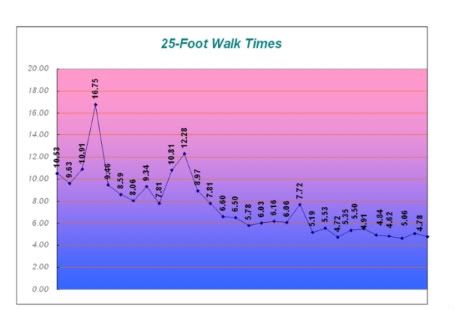Posted: Thu Aug 07, 2008 9:33 am
Lucy and Soccer

She is a Mini Goldendoodle. Oh, no soccer isn't getting trained......
Ken

She is a Mini Goldendoodle. Oh, no soccer isn't getting trained......
Ken
Welcome to This is MS, the leading forum for Multiple Sclerosis research and support. Join our friendly community of patients, caregivers, and researchers celebrating over 20 years of delivering hope through knowledge.
https://www.thisisms.com/forum/


……but then I also found a paper titled, “Influence of Temperature and Relative Humidity on the Survival of Chlamydia pneumoniae in Aerosols”, which says:”Although under conditions of high relative humidity the infectivity of Chlamydia pneumoniae in the open air decreases rapidly, suggesting a direct mode of transmission under these conditions, it is probable that the transmission occurs in some cases indirectly since the microorganism can survive for up to 30 hours in a hostile environment (Falsey et al., 1993).”
Subsequently, I found a Way Better MS Map. I’d love for someone to explain these seemingly variant explanations.”The percent survival of C. pneumoniae in aerosols was highest at high RH and at temperatures between 15 and 25°C. Dehydration appeared to be an important factor in the inactivation of C. pneumoniae, whereas extreme temperatures had a more limited influence on survival.”
It’s things like this that really give me perspective.When I was in the monastary, my spiritual director, Father Theodore, would occasionally talk to me about “the dark night of the soul.” It was a term used by the monks of old to describe the shadow side of an individual’s pursuit of personal holiness. This was a period of time marked by self-recrimination, discouragement, and a lack of hope. This arid wasteland of spiritual depression could last for weeks or sometimes months and was an inevitable part of one’s interior journey. “Your faith will be tested and you will feel lost and abandoned,” was the way he put it.
Metalloproteinases in Biology and Pathology of the Nervous System”Specifically, MMP9, which is absent in the CSF of normal individuals, is upregulated in MS and in other inflammatory neurological diseases.” … “By using Gadolinium-Enhanced Magnetic Resonance Imaging (MRI) techniques, it was found that MS patients with high MMP9 and low TIMP1 levels tended to worsen.” … “When injected into the CNS, MMPs can disrupt myelin and cause demyelination.
Matrix Metalloproteinases Limit Functional Recovery after Spinal Cord Injury by Modulation of Early Vascular Events”There is evidence that MMP-9 contributes to demyelination.
Matrix metalloproteinase-9 and -7 are regulated in experimental autoimmune encephalomyelitis”92-kDa gelatinase (MMP-9) and matrilysin are selectively upregulated during AT-EAE and thus may contribute to the pathogenesis of inflammatory diseases of the CNS.”
Inhibitory Effect of Polyunsaturated Fatty Acids on MMP-9 Release from Microglial Cells—Implications for Complementary Multiple Sclerosis Treatment”The treatment with both Omega-3 PUFA and fish oil dose-dependently inhibited the LPS-induced production of MMP-9.”
Matrix metalloproteinase-9 (gelatinase B) is selectively elevated in CSF during relapses and stable phases of multiple sclerosis”MMP-9 levels in CSF were elevated in 100% of relapse-remitting multiple sclerosis and 57% of primary progressive multiple sclerosis CSF samples”
Experimental models of neuroprotection relevant to multiple sclerosis”Matrix metalloproteinase-9 (MMP-9) also causes neuron death in neurotoxicity models”
Matrix metalloproteases activity and ultrastructural changes in the early phase of experimental allergic encephalomyelitis. The effect of oral treatment with spinal cord hydrolysate [correction of hydrolisate] proteins in Lewis rat. The pilot study”Myelin sheets were disorganized”
The Effects of Acute and Extended Inhibition of Matrix Metalloproteinases on Demyelination and Functional Recovery after Spinal Cord Injury”We have shown that early blockade of MMP’s stabilizes vascular function, improves motor recovery, and reduces white matter damage.” … ”These findings offer the first mechanistic link between MMP’s and early demyelination in the injured spinal cord.” … ”MMP’s also promote demyelination.” … ”Both direct and indirect evidence support the involvement of MMP’s in degradation of myelin. Direct delivery of MMP’s into the parenchyma results in tissue damage including disruption of myelin.”
Persistent Macrophage/Microglial Activation and Myelin Disruption after Experimental Autoimmune Encephalomyelitis in Tissue Inhibitor of Metalloproteinase-1-Deficient Mice”Because microglia and/or macrophages release factors that directly contribute to oligodendrocyte injury, we propose that TIMP-1 may be an endogenous regulator of macrophage/microglial activation either through inhibition of a metalloproteinase, or perhaps even through a direct MMP-independent process. Thus, an important physiological action of TIMP-1 may be to delimit macrophage/microglial activities and therein permit effective remyelination after injury, and, consequently, TIMP-1_/_ mice exhibit more persistent oligodendrocyte disruption.”
Gelatinase B/matrix metalloproteinase-9 cleaves interferon-b and is a target for immunotherapy”Gelatinase B (MMP-9) is capable of destroying the blood-brain barrier, and of cleaving myelin basic protein into immunodominant and encephalitogenic fragments, thus playing a functional role and being a therapeutic target in multiple sclerosis. Here we demonstrate that gelatinase B proteolytically cleaves IFN-b, kills its activity, and hence counteracts this cytokine as an antiviral and immunotherapeutic agent. This proteolysis is more pronounced with IFN-b-1b than with IFN-b-1a. Furthermore, the tetracycline minocycline, which has a known blocking effect in experimental autoimmune encephalomyelitis, an in vivo model of acute inflammation in multiple sclerosis, and other MMP inhibitors prevent the in vitro degradation of IFN-b by gelatinase B.”
Clinical and Biochemical Results of the Metalloproteinase Inhibition with Subantimicrobial Doses of Doxycycline to Prevent Acute Coronary Syndromes (MIDAS) Pilot TrialAn alternative explanation for an effect of Doxycycline on coronary events may lie in its ability to treat Chlamydia pneumoniae.
Chlamydia pneumoniae Proteins Induce Secretion of the 92-kDa Gelatinase by Human Monocyte–”C pneumoniae are able to multiply within macrophages, where they persist for long periods without causing any damage until they are reactivated by immunosuppression or by coincidental infection with other organisms.” … “Stimulation of monocyte-derived macrophage 92-kDa gelatinase production by C pneumoniae occurred via the chlamydial derived proteins Omp2, MOMP, and HSP60.
EMMPRIN (CD 147) is a central activator of extracellular matrix degradation by Chlamydia pneumoniae-infected monocytes. Implications for plaque rupture”Thus, C. pneumoniae appears to be specifically equipped to stimulate MMP activity in human monocytes”
Matrix metalloproteinase-9 expression is associated with the presence of Chlamydia pneumoniae in human coronary atherosclerotic plaques”C. pneumoniae and its heat shock protein-60 have been shown to induce expression of MMP-9”
Chlamydial and human heat shock protein 60s activate human vascular endothelium, smooth muscle cells, and macrophages. This one is subtle, yet I found it powerful after I reread it several times. CPn infected cells were found to release chlamydial heat shock protein 60 (HSP 60) AND human HSP 60.”During these lytic phases, the host cells release both their own HSP 60, produced during the previous chronic phase of infection, and also the human HSP 60, which has been produced in the host cell in response to the infection and to previous noninfectious stimuli, and which we and others have shown in human atheroma.”
Chlamydial Heat Shock Protein 60 Localizes in Human Atheroma and Regulates Macrophage Tumor Necrosis Factor-a and Matrix Metalloproteinase Expression. The idea I get here is that human and clamydia heat shock protein often coexist together and perhaps (a very big and speculative perhaps) the immune system doesn’t do such a good job distinguishing between them in.”Chlamydiae produce large amounts of heat shock protein 60 (HSP 60) during chronic, persistent infections, and C pneumoniae localizes predominantly within plaque macrophages.”…”Wick et al have proposed that HSP 60/65 might promote atherosclerosis by stimulating autoimmunity. Our finding that chlamydial HSP 60 colocalizes with its homolog, human HSP 60, within plaque macrophages in the majority of cases (77%), suggests that bacterial HSP might play such a role. The homology between human and chlamydial HSP 60 suggests the possibility of antigenic mimicry.”…”However, chronic infection with C pneumoniae, through the expression of HSP 60, might provoke an autoimmune reaction against human HSP 60.”
Autoimmunity to Human Heat Shock Protein 60, Chlamydia pneumoniae Infection, and Inflammation in Predicting Coronary Risk. Doesn’t this just get you thinking? The cardiology folks seem to have a handle on something we’re still arguing with our neurologists about. CPn tied to autoimmunity, how about that? Wouldn’t it be amazing to learn in the end that everyone is right – perhaps MS is an autoimmune AND bacterial pathology."Heat shock proteins (Hsps) are a class of evolutionarily highly conserved proteins that are produced by cells in response to stress or injury, including infection, to protect themselves from unfavorable conditions. Bacterial Hsps have a high sequence homology with their human counterparts, and this has been suggested, in the course of bacterial infections, to lead to autoimmune processes predisposing to autoimmune diseases.” … “This finding suggests that the antibodies to human Hsp60 may have been induced, at least partly, by C pneumoniae Hsp60 during chronic and repeated C pneumoniae infections, but the risk for coronary events is present only when autoimmunity to human Hsp60 has developed.”…” Our findings suggest elevated CRP level and an elevated level of antibodies to human Hsp60, as a marker of an autoimmunity reaction, indicate active C pneumoniae infection.”…”The speculative pathway in the case of C pneumoniae infection is initiated by a chain reaction in which CRP and Hsp60 play a role: a chronic C pneumoniae infection increases the expression of its own Hsp60, which leads to an increased expression of host Hsp60 and, thus, gradually results in autoimmunity with systemic inflammation and elevated CRP and, finally, in clinical manifestations of coronary heart disease.”
Role of Heat Shock Proteins in Protection from and Pathogenesis of Infectious Diseases. The real kicker to this article is somewhat subtle. The title says, “Pathogenesis of Infectious Diseases. The article is very heavy on Autoimmune Diseases. The implication is ………..”Heat shock proteins (hsp) are widely distributed in nature and are among the most highly conserved molecules of the biosphere. hsp perform important functions in the folding and unfolding or translocation of proteins, as well as in the assembly and disassembly of protein complexes. Because of these helper functions, hsp have been termed molecular chaperones. The molecules involved in antigen recognition, i.e., immunoglobulins (Ig), T-cell receptors (TCR), and gene products of the major histocompatibility complex (MHC), are all multimeric complexes, and their assembly is promoted by distinct chaperones.” … “These findings provide evidence that selfhsp peptides have access to both MHC class I and class II molecules. This emphasizes that the division between loading of MHC class I and class II molecules is not as rigid as was originally assumed.” … “Finally, colocalization of gamma delta T cells and hsp60-expressing oligodendrocytes in chronic brain lesions and isolation of gamma delta T cells from synovial fluid of MS patients emphasizes that hsp-reactive gamma delta T cells play a role in the pathogenesis of MS.”